Family: Tenthredinidae
Family common name: common sawflies
Subfamily: Tenthredininae
Tribe: Tenthredinini
Genus: Rhogogaster Konow, 1884
Subgenera: Rhogogaster, Cytisogaster
The Tenthredinidae are the most species-rich family and are found throughout the world, in all continents but Antarctica. They are known as the “common sawflies.” They can generally be recognized by a cylindrical body and long, segmented antennaeantenna:
the sensory organ emerging from the front of the head, usually between the compound eyes and above the clypeus; includes the flagellum, scape and pedicel
 . Otherwise, they come in a variety of colors, sizes, and forms (Goulet 1992Goulet 1992:
. Otherwise, they come in a variety of colors, sizes, and forms (Goulet 1992Goulet 1992:
Goulet H. 1992. The genera and subgenera of the sawflies of Canada and Alaska: Hymenoptera. Symphyta. The insects and arachnids of Canada. Part 20. Agriculture Canada Publication.).
Sawflies in the Tenthredininae subfamily are relatively large compared to others in the family, often with distinct colorful markings. Some are wasp-like with black and yellow stripes (Goulet 1992Goulet 1992:
Goulet H. 1992. The genera and subgenera of the sawflies of Canada and Alaska: Hymenoptera. Symphyta. The insects and arachnids of Canada. Part 20. Agriculture Canada Publication.). Many species’ life histories are not known. Some Tenthredininae species feed uniquely, as adults, on flower pollen and other insects (Smith 1993Smith 1993:
Smith DR. 1993. Systematics, life history, and distribution of sawflies. Pp. 3-32. In: Wagner MR and Raffa KF, eds. Sawfly Life History Adaptations to Woody Plants. University of Minnesota Academic Press. 581 pp.). They can be distinguished from other subfamilies by wing venationvenation:
the network of veins on a wing
(Goulet 1992Goulet 1992:
Goulet H. 1992. The genera and subgenera of the sawflies of Canada and Alaska: Hymenoptera. Symphyta. The insects and arachnids of Canada. Part 20. Agriculture Canada Publication.).
Rhogogaster is a unique sawfly often recognized by large size, angular facial features, and bright green coloring that often fades to light yellow in dead specimens (Benson 1965bBenson 1965b:
Benson RB. 1965b. The classification of Rhogogaster Konow (Hymenoptera: Tenthredinidae). Proceedings of the Royal Entomological Society of London. Series B: Taxonomy 34: 105-112., Taeger and Vitsaari 2015Taeger and Vitsaari 2015:
Taeger A and Vitsaari M. 2015. European Rhogogaster s. str., with notes on several Asian species (Hymenoptera: Tenthredinidae). Zootaxa 4013 (3): 369-398. http://doi.org/10.11646/zootaxa.4013.3.3).
There are 40 described extantextant:
in existence; opposite of extinct
species worldwide. Four species occur in North America (Taeger et al. 2010Taeger et al. 2010:
Taeger A, Blank SM, and Liston AD. 2010. World Catalog of Symphyta (Hymenoptera). Zootaxa 2580: 1-1064.).
Subfamily characters
 vein M and 1m-cu parallel (Goulet 1992Goulet 1992:
vein M and 1m-cu parallel (Goulet 1992Goulet 1992: vein R bent at basebase:
vein R bent at basebase: Sc (Goulet 1992Goulet 1992:
Sc (Goulet 1992Goulet 1992: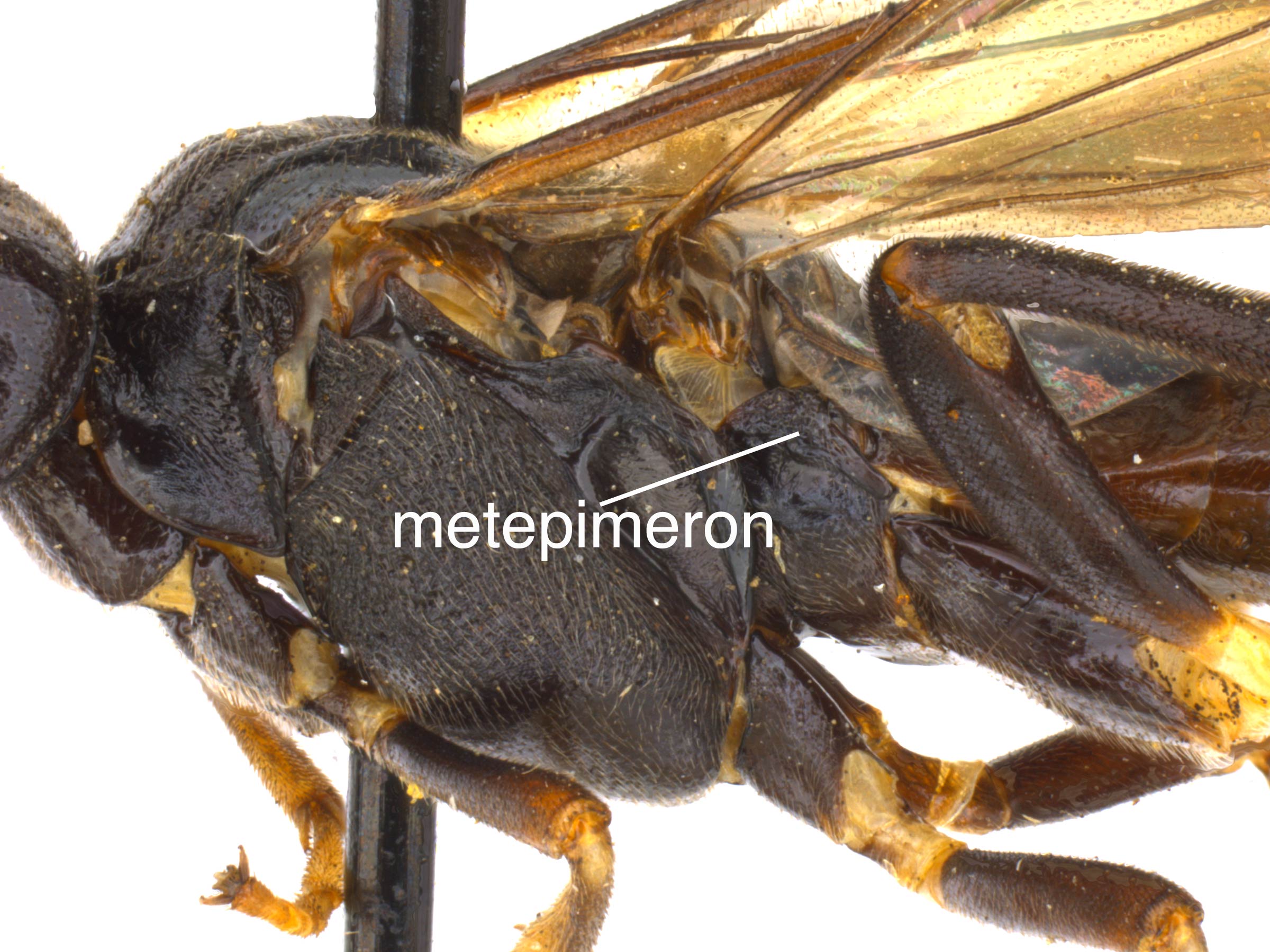 separated from metepisternummetepisternum:
separated from metepisternummetepisternum: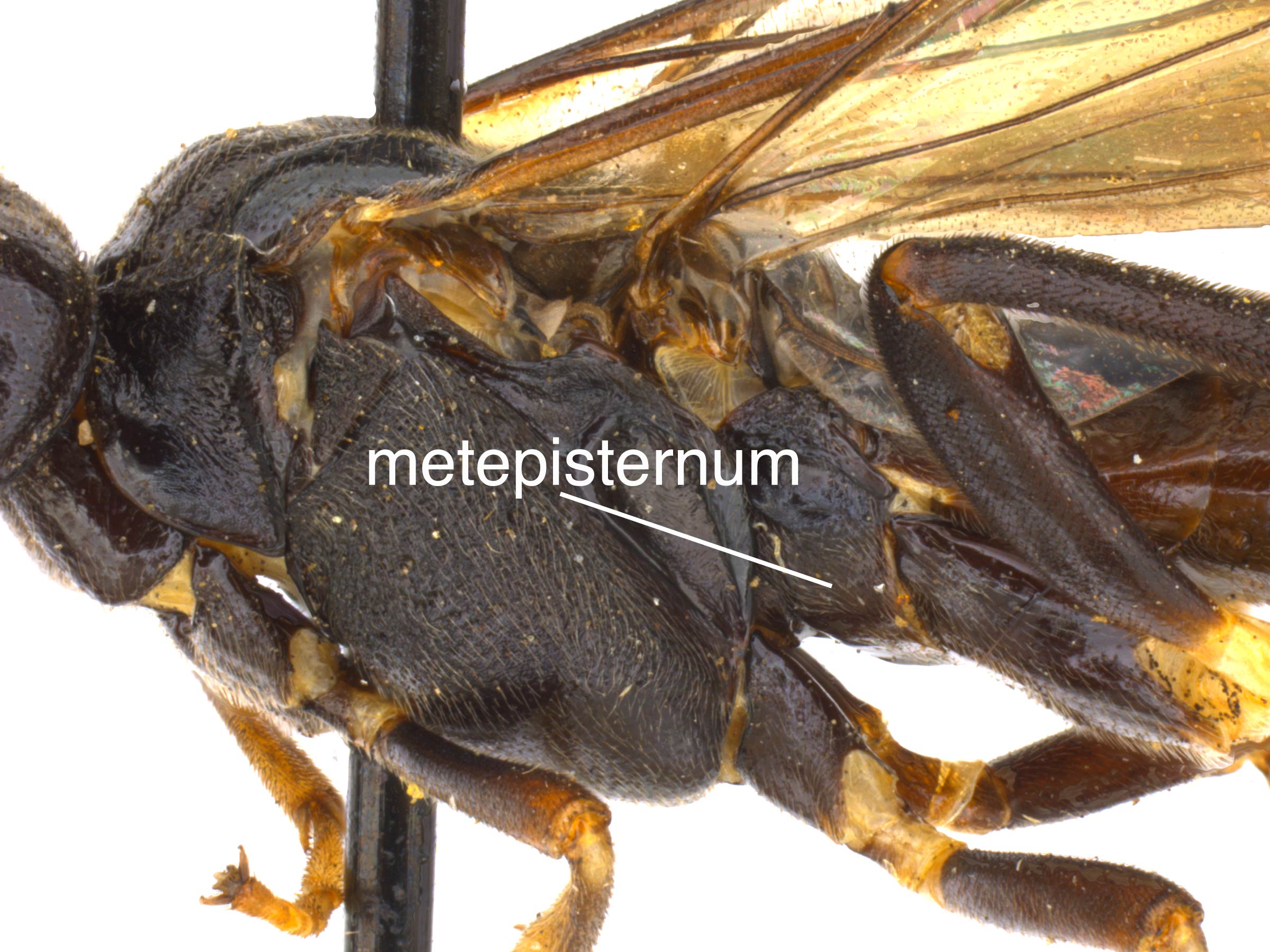 by distinct furrowfurrow:
by distinct furrowfurrow: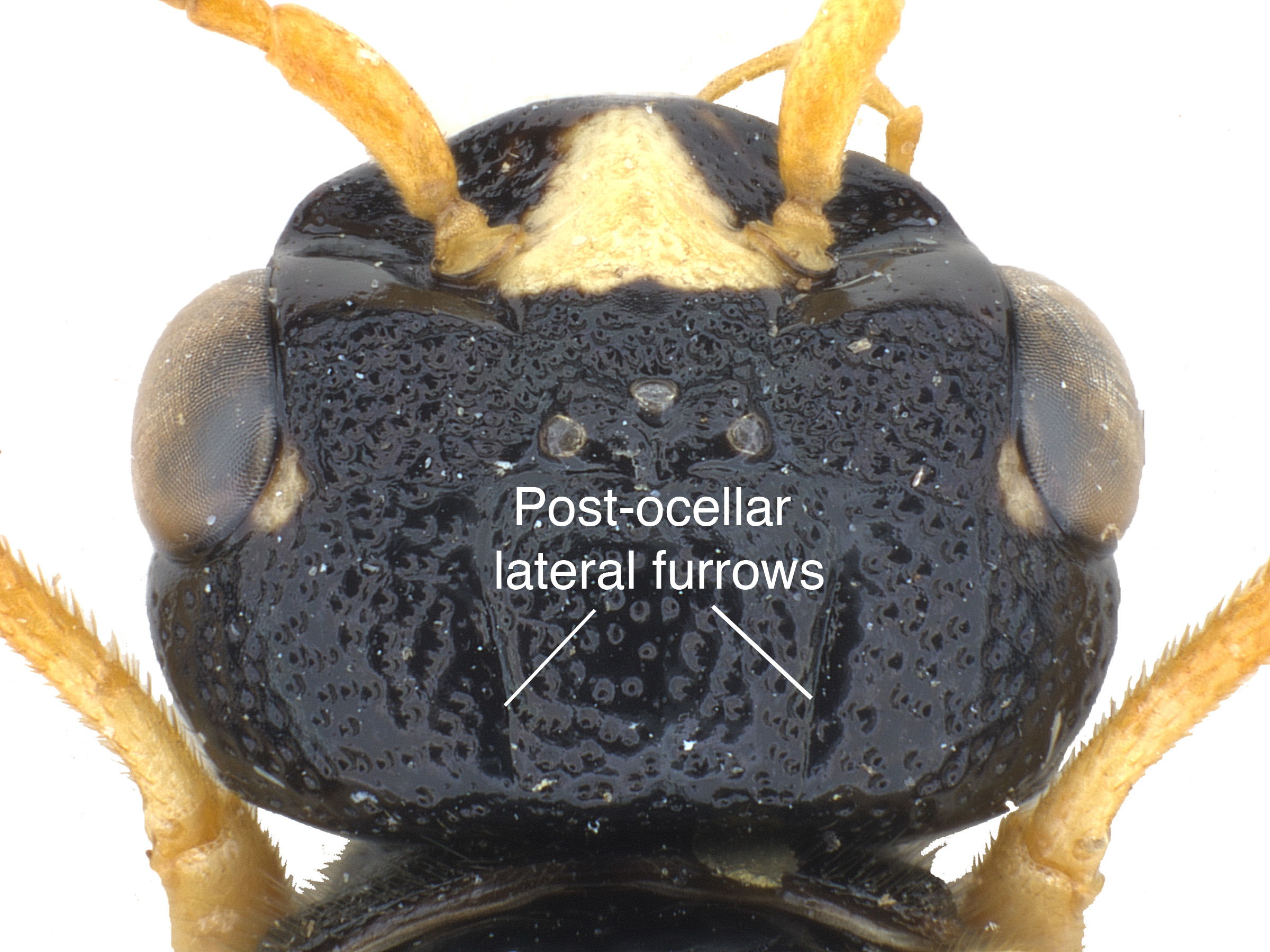 (Goulet 1992Goulet 1992:
(Goulet 1992Goulet 1992:Genus characters
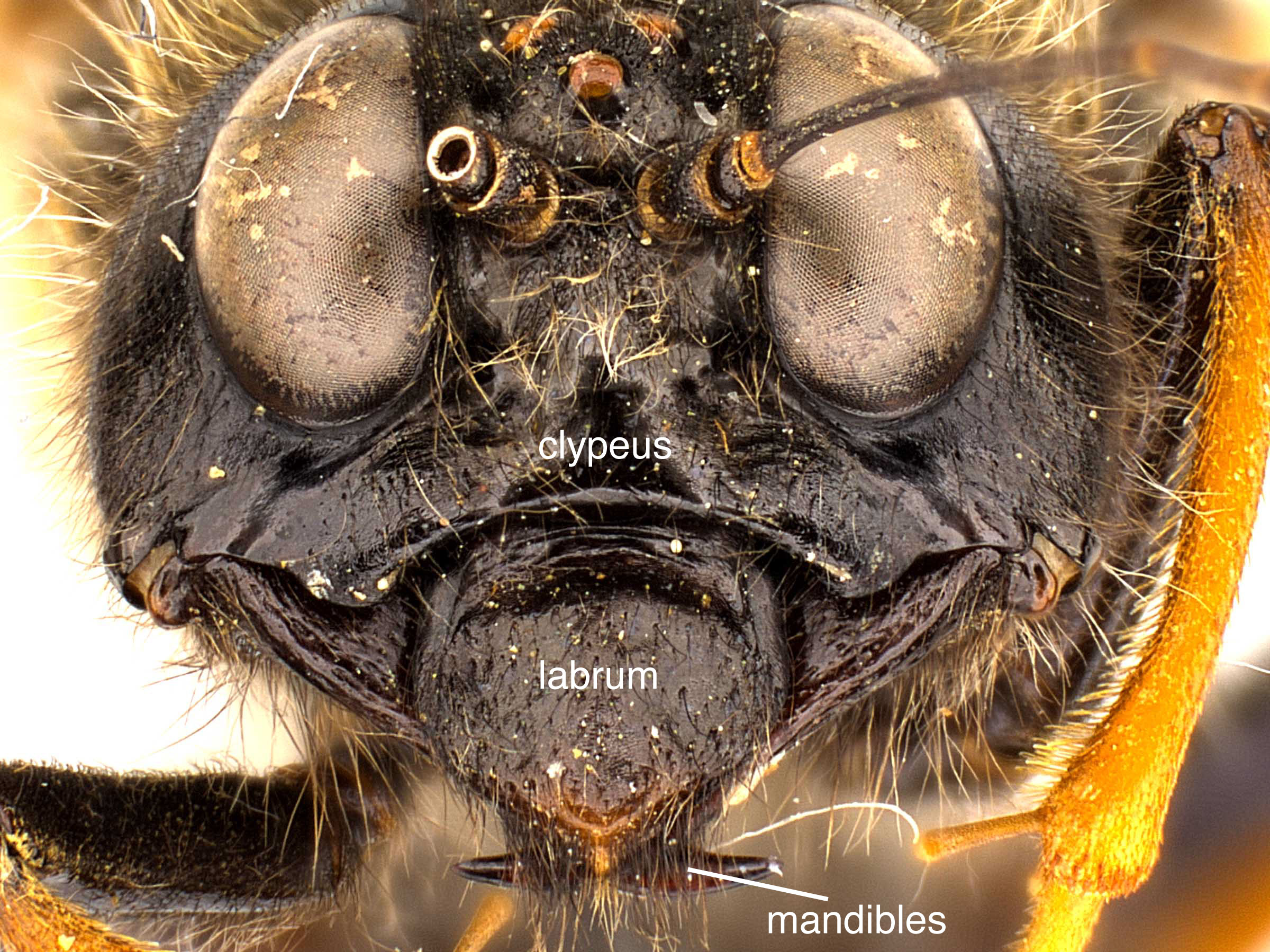 margin straight or slightly emarginated (Goulet 1992Goulet 1992:
margin straight or slightly emarginated (Goulet 1992Goulet 1992: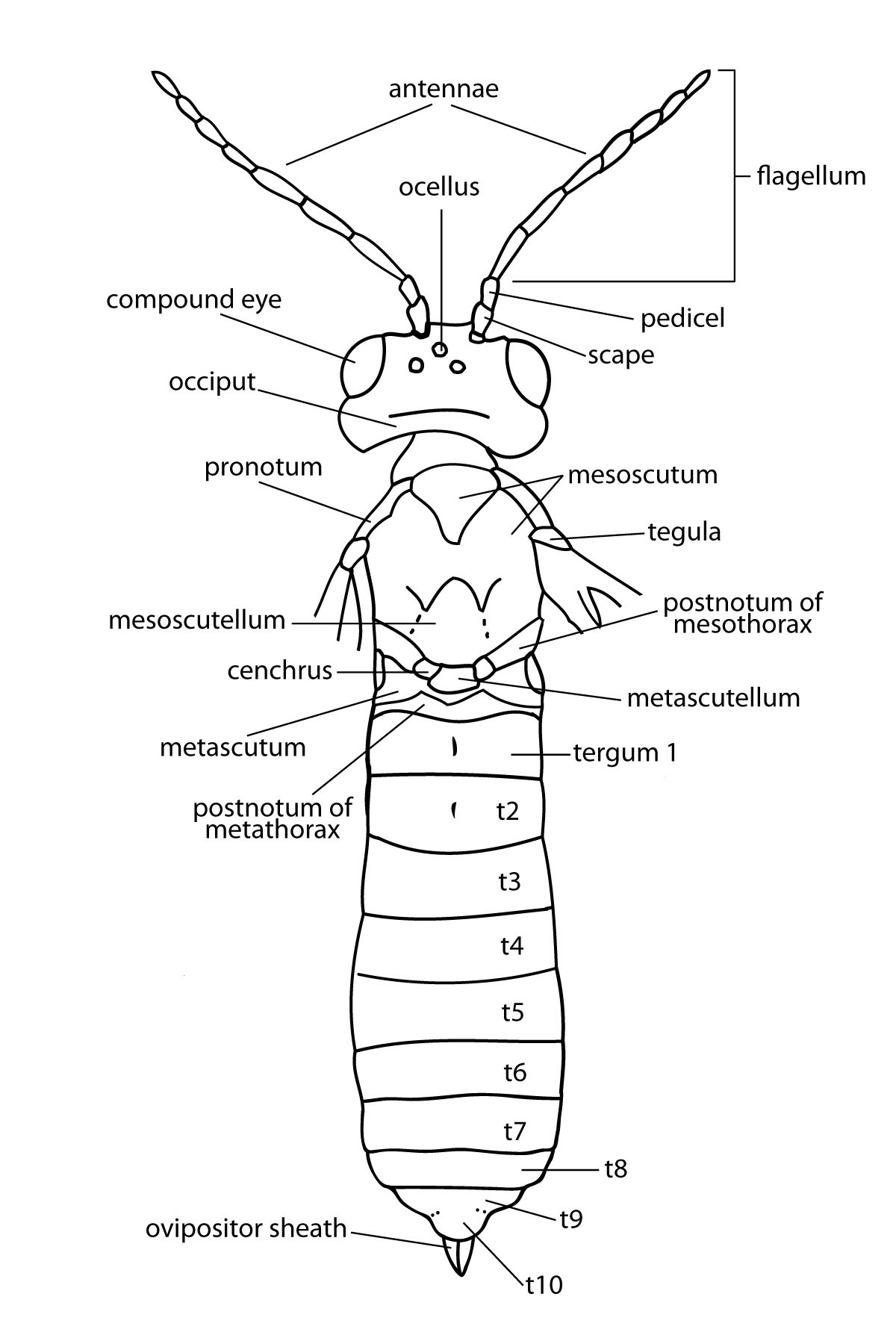 ridge extending from mandiblemandible:
ridge extending from mandiblemandible: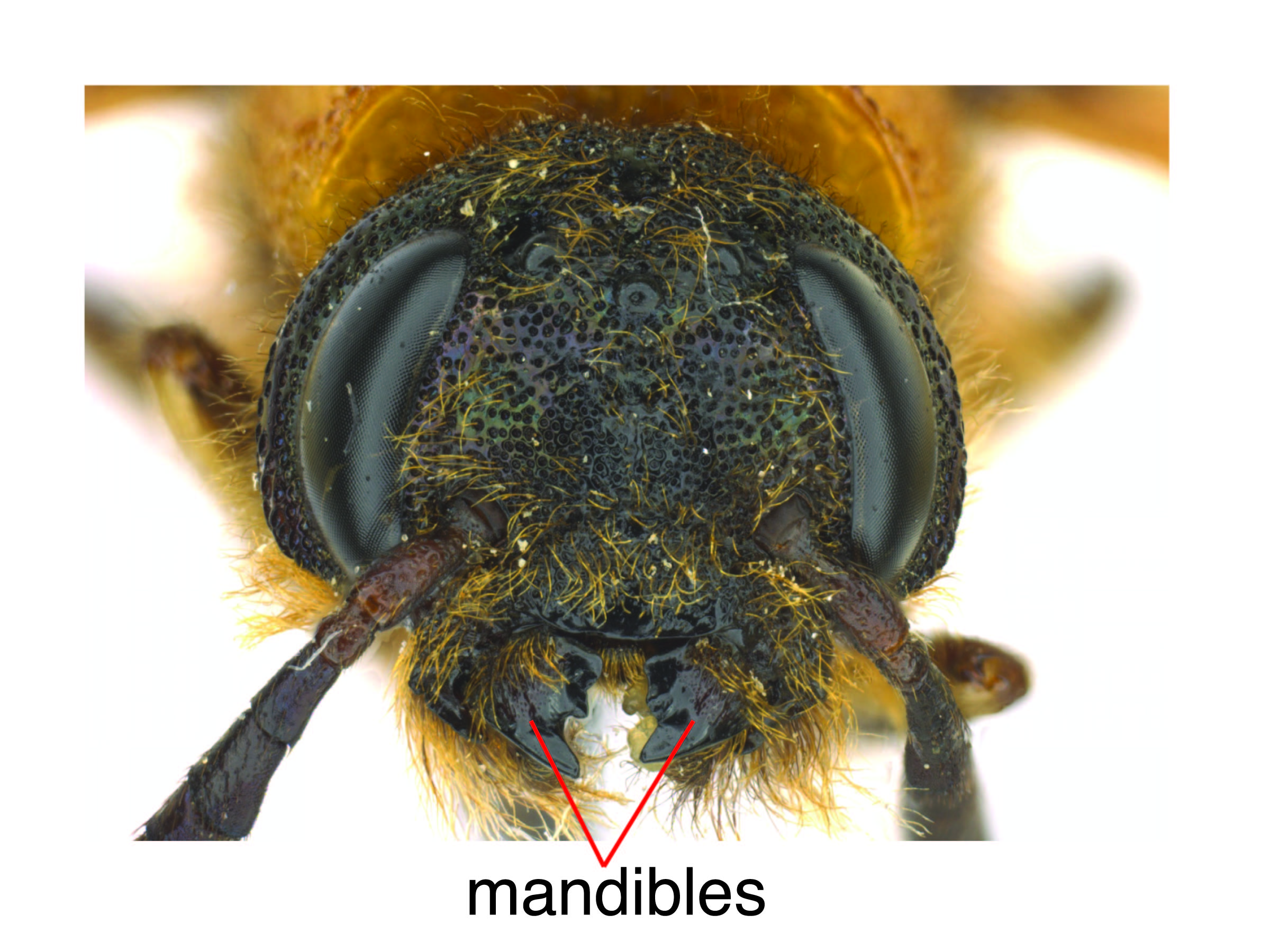 to near post-ocellar area (Goulet 1992Goulet 1992:
to near post-ocellar area (Goulet 1992Goulet 1992: vein 2A+3A complete, connected to 1A by crossveincrossvein:
vein 2A+3A complete, connected to 1A by crossveincrossvein: anal crossveinanal crossvein:
anal crossveinanal crossvein: vein 2r present (Goulet 1992Goulet 1992:
vein 2r present (Goulet 1992Goulet 1992: vein M intersecting Sc+R basalbasal:
vein M intersecting Sc+R basalbasal: veins 1m-cu and Cu1 120°–150° (Goulet 1992Goulet 1992:
veins 1m-cu and Cu1 120°–150° (Goulet 1992Goulet 1992: anal crossveinanal crossvein:
anal crossveinanal crossvein: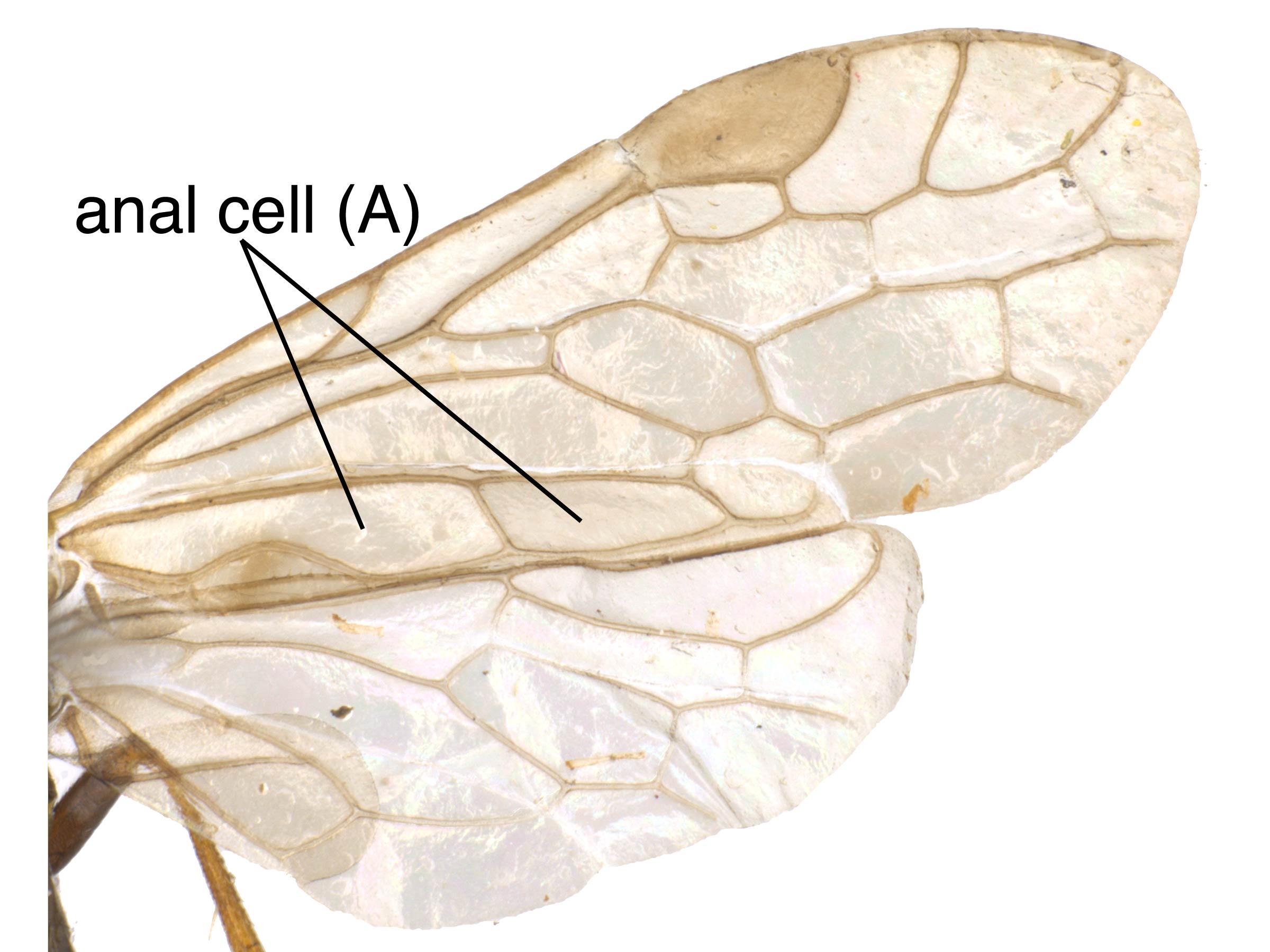 (Goulet 1992Goulet 1992:
(Goulet 1992Goulet 1992: obtusely angled on lower posterior corner (Goulet 1992Goulet 1992:
obtusely angled on lower posterior corner (Goulet 1992Goulet 1992: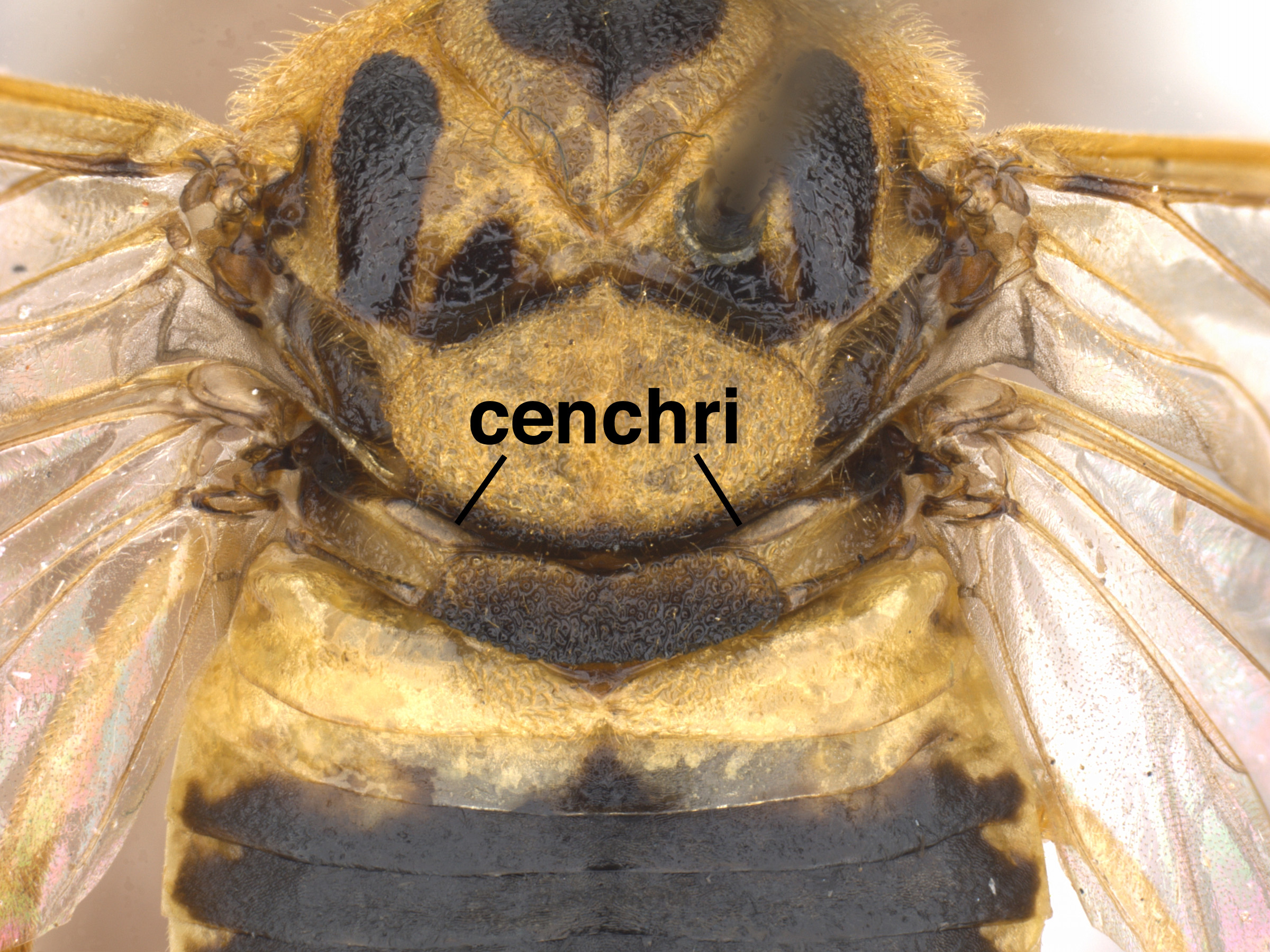 3X medial length of postnotumpostnotum:
3X medial length of postnotumpostnotum:Rhogogaster can be confused with similar species in the subfamily Tenthredininae. It can be distinguished from most other genera by the obtuse angle on the posteroventralposteroventral:
describes location towards the back on the underside of the body; posterior and ventral
area of metepimeronmetepimeron:
the dorsal portion of the metapleuron
 , the ocellarocellar:
, the ocellarocellar:
of or pertaining to the ocellus or ocelli
ridge, and the ventralventral:
of or on the underside of the body or structure
angle of the compound eye. Rhogogaster can be distinguished from closely related Tenthredo by the size of the eye, the apicalapical:
towards the apex; farthest away from the body
margin of the labrumlabrum:
a sclerotized structure on the front of the head between the clypeus and mandibles
 , and a lack of furrowfurrow:
, and a lack of furrowfurrow:
a groove or linear depression
 on the pronotumpronotum:
on the pronotumpronotum:
the anterodorsal part of the thorax, often situated posterior to the head
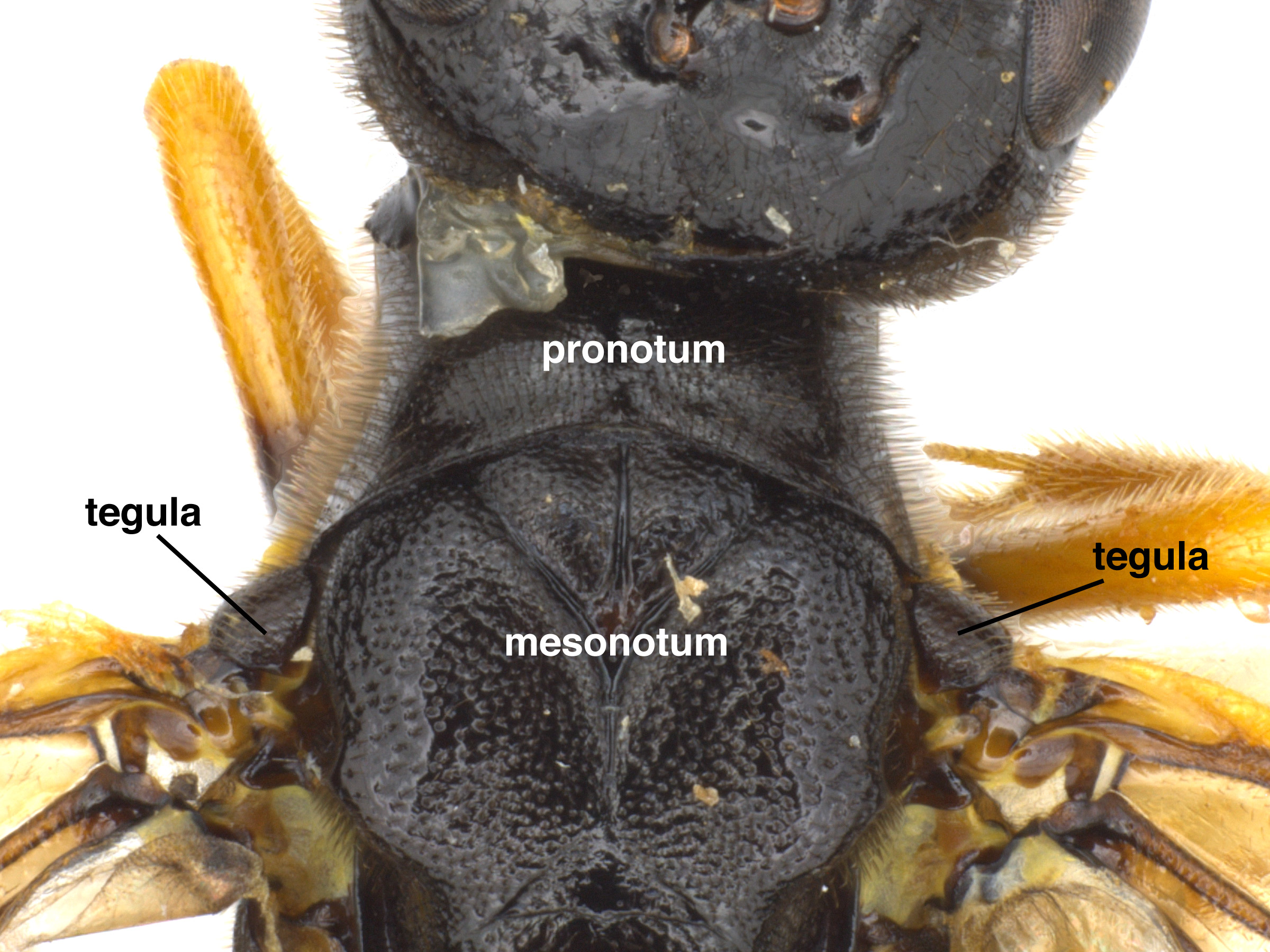 (Goulet 1992Goulet 1992:
(Goulet 1992Goulet 1992:
Goulet H. 1992. The genera and subgenera of the sawflies of Canada and Alaska: Hymenoptera. Symphyta. The insects and arachnids of Canada. Part 20. Agriculture Canada Publication.).
none
Rhogogaster in North America feed on Filipendula, Stellaria (chickweed), Circaea (enchanter’s nightshade), Populus (poplar), Alnus (alder) and Ranunculus (buttercup) (Goulet 1992Goulet 1992:
Goulet H. 1992. The genera and subgenera of the sawflies of Canada and Alaska: Hymenoptera. Symphyta. The insects and arachnids of Canada. Part 20. Agriculture Canada Publication.).
Specific biology of this genus is unknown. Some larvaelarva:
the immature stage of holometabolous insects
 may be polyphagouspolyphagous:
may be polyphagouspolyphagous:
feeding upon many different kinds of food
(Smith 1993Smith 1993:
Smith DR. 1993. Systematics, life history, and distribution of sawflies. Pp. 3-32. In: Wagner MR and Raffa KF, eds. Sawfly Life History Adaptations to Woody Plants. University of Minnesota Academic Press. 581 pp.). Rhogogaster species are univoltineunivoltine:
describing an insect with a life cycle of one generation per year
(Taeger and Vitsaari 2015Taeger and Vitsaari 2015:
Taeger A and Vitsaari M. 2015. European Rhogogaster s. str., with notes on several Asian species (Hymenoptera: Tenthredinidae). Zootaxa 4013 (3): 369-398. http://doi.org/10.11646/zootaxa.4013.3.3).
There exist a few records of Rhogogaster adults predating on other insects, including flies and, in one case, Nematinae sawflies (Taeger and Vitsaari 2015Taeger and Vitsaari 2015:
Taeger A and Vitsaari M. 2015. European Rhogogaster s. str., with notes on several Asian species (Hymenoptera: Tenthredinidae). Zootaxa 4013 (3): 369-398. http://doi.org/10.11646/zootaxa.4013.3.3).
World: The genus is HolarcticHolarctic:
describing the region of the Northern Hemisphere that includes both the Nearctic and Palearctic regions
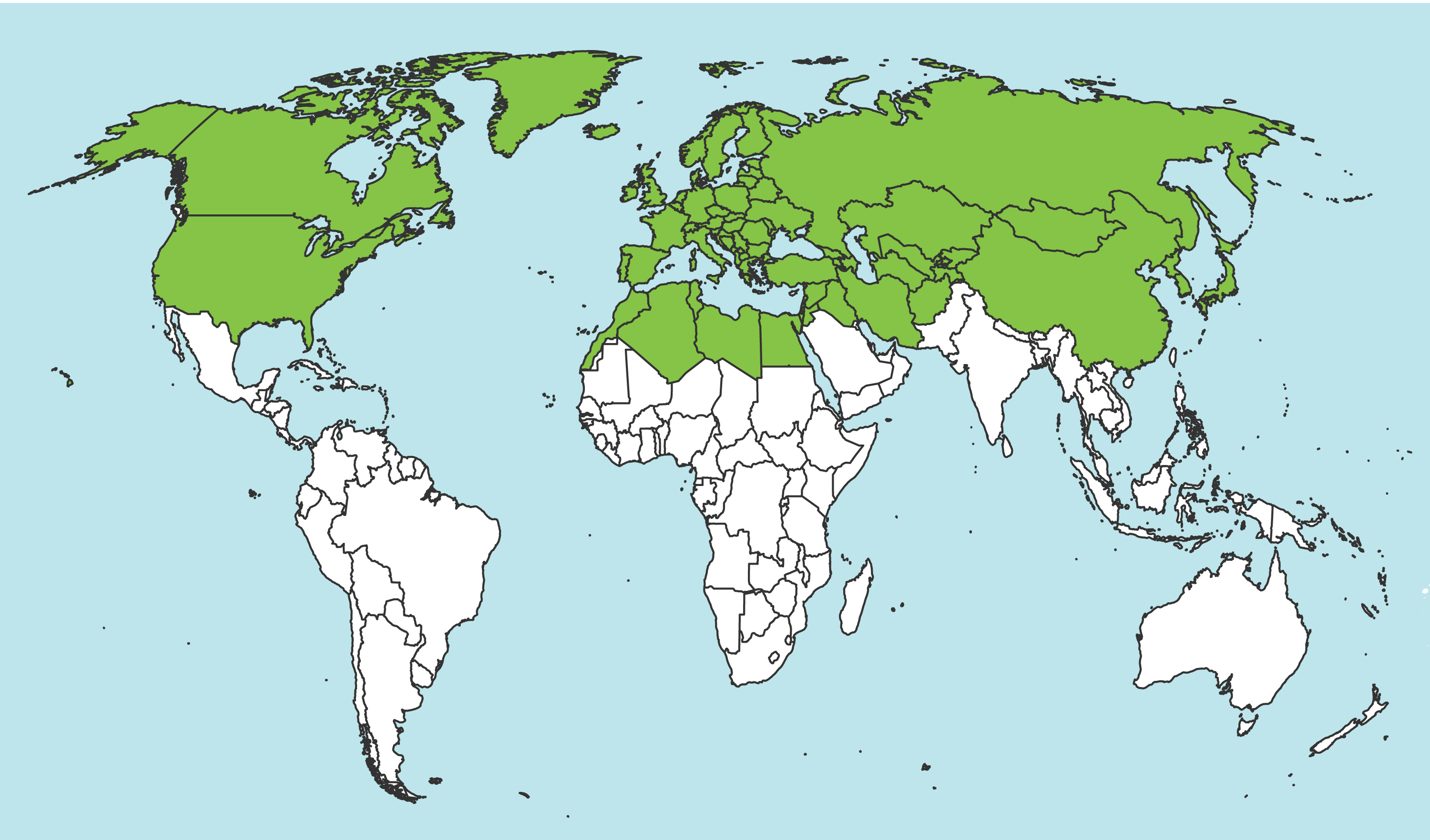 , present in North America and Europe, with the most species in Central and East Asia (Taeger et al. 2010Taeger et al. 2010:
, present in North America and Europe, with the most species in Central and East Asia (Taeger et al. 2010Taeger et al. 2010:
Taeger A, Blank SM, and Liston AD. 2010. World Catalog of Symphyta (Hymenoptera). Zootaxa 2580: 1-1064., Taeger and Vitsaari 2015Taeger and Vitsaari 2015:
Taeger A and Vitsaari M. 2015. European Rhogogaster s. str., with notes on several Asian species (Hymenoptera: Tenthredinidae). Zootaxa 4013 (3): 369-398. http://doi.org/10.11646/zootaxa.4013.3.3).
North America: Rhogogaster occurs in western North America from Alaska and British Columbia south to California, east to the Rocky Mountains, the Great Lakes region, and New York (Ross 1943bRoss 1943b:
Ross HH. 1943b. The Nearctic sawflies of the genus Rhogogaster (Hymenoptera). The Pan-Pacific Entomologist 19 (4): 129-133.).
Map data from: GBIF.org (29 October 2019) GBIF Occurrence Download Rhogogaster
Details about data used for maps can be found here.